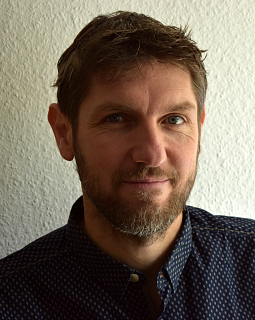Tech for good is not a subject that Information Age often covers. However, it is an important area that tech leaders should take an interest in.
The world has never before been on such a brink of social and environmental disaster. But, also, we have never before been in such a position to reverse these species-defining challenges — with the aid of technology.
There are some organisations committed to combatting these challenges, such as the Norwegian Refugee Council (NRC). But, they are often hindered by scale and resource.
To find out how this organisation has embraced tech to enhance its service, we spoke to Pietro Galli, the head of ICT at NRC during Oktane19.

At the NRC, Galli is in charge of the non-profit IT, and that spans from operations and support to really drive digital transformation in the organisation.
“I’m the focal point for the whole digital transformation strategy going forward,” he told Information Age.
Tech for good: the NRC
NRC is an independent non-profit international. Founded in 1946, the organisation responds to the needs of people who are made to flee from conflict, “especially man-made conflict,” explained Galli.
“We work in 32 countries from Myanmar to Colombia, usually close or either just adjacent to or inside war zones, because that’s where people are fleeing from,” he said.
The NRC performs three critical functions:
1. They speak on behalf of people that have no voice, people that are forced to flee their homes. I am not necessarily the one that does it all the time, but that’s one.
2. They deploy staff and professionals to the UN and government bodies at short notice for crisis surge capacity.
3. The core of the work surrounds direct aid.
“We are quite a specific organisation,” said Galli. “We don’t do the whole breadth of humanitarian aid, but we have core competencies that are key to us.”
So, how is tech going to help in their mission? The NRC’s digital transformation strategy centres around bringing technology in to augment what the organisation does; to “possibly change it for the better and to reach more people at scale, faster. That’s the start,” he said.
The NRC is 96% funded by governments
Partnering with technology companies
Partnering with technology companies has helped the NRC’s digital transformation.
Similar to more established organisations, the NRC has been around for 72 years, and digital is a new concept.
“It’s not part of our DNA,” explained Galli, “we’re not digitally native as an organisation.”
But, what they are good at is delivering aid on the doorstep of humanitarian crisis zones.
Partnering with tech companies can help bridge that culture gap — integrating tech to enhance the overall delivery of aid.
There are challenges with tech for good of course, because for the NRC, every penny possible has to go to the beneficiary. But, when you have to spend money on technology and you don’t have a clear vision of the return on investment, it’s difficult to get an agreement.
“You need to show success before everybody goes for it,” suggested Galli.
“We are doing a lot lately and so we have partnerships with Okta, with Microsoft and some others that are trying to get into the business of what we do, the core business, not just the back end.”
Tech for Good: Sustainability at the heart of new land-based salmon farming initiative
The NRC and Okta
The NRC used to champion an infrastructure-heavy strategy — where it tried to connect all the offices around the world to an on-premise data warehouse in Oslo. The organisation was spending a lot of money on hardware and maintenance. “Every box has had to go through Oslo and be configured, sent out and it just couldn’t scale,” explained Galli. “And we were building a technology that was already by-passed by the cloud,” he said. “Okta is helping us take this away.”
“We are moving to cloud,” Galli said. Moving away from on-premise, provisioning, maintaining and accessing cloud applications in one go and in one way is time saving and causes less friction. For example, it’s helping the NRC’s staff to have one access portal for all the applications.
Okta plays a part in protecting this move to the cloud.
“We see the amount of attacks that it’s stopping and it’s really helped us move up a notch on security,” said Galli.
Okta is helping the NRC from the inside out, as tech so often does
The digital relationship
Galli hopes that with technology partners such as Okta, the NRC can begin to form digital relationships with the refugees they want to help.
“We want to start having a relationship which is much more digital, almost like a retail company that adds a digital site and that becomes a portal to interact and bring in customers,” he said.
“That could be a place where Okta comes in and helps us. We need them to authenticate the platform in a safe way, so we know who the customers and beneficiaries are. That becomes extremely important when we’re holding their data.
“In many cases we hold more data than they hold themselves, because they may have lost their documents or not even have them. So we have a registry of their names, their birth dates, their original zone and they may not even have that on a piece of paper, which is what counts in today’s state-led identity recognition.
“That’s our aim down the line.”
The NRC, through technology, is trying to re-imagine the way it works through digital and how digital can augment the employee and end user experience — back to business jargon! Security and identity access management is an important aspect of that, especially if there are more people interacting with the non-profit digitally.
Moving to the cloud, digital transformation and prioritising zero trust security
Tech for good
Galli told Information Age that the world is just at the beginning of using tech for good.
The problem, he thought, was that everyone goes about it individually. Collectively, however, “we could do it much faster; with common data models, for example,” he said.
Another issue surrounds priorities. Governments and regulatory bodies around the world are releasing more rules around digital and the use of data on a compliance level, not on an enabling level.
We hear this all the time. The tech is there, but the regulation slows the potential down.
That presents issues of scale, “especially when you’re an organisation like us and you have to make big investments,” continued Galli. “How do we make the investments to make the switch from transactional and paper-based to digital, in order to harness data and then to harness the speed and the ability to achieve scale,” he asked?
“I think collectively we could do much more.”







